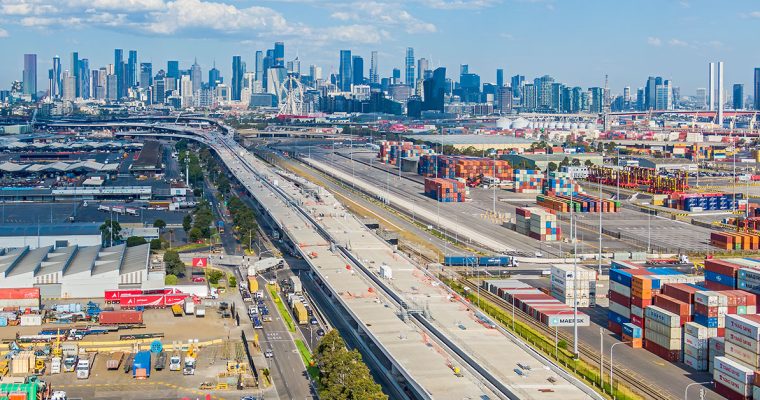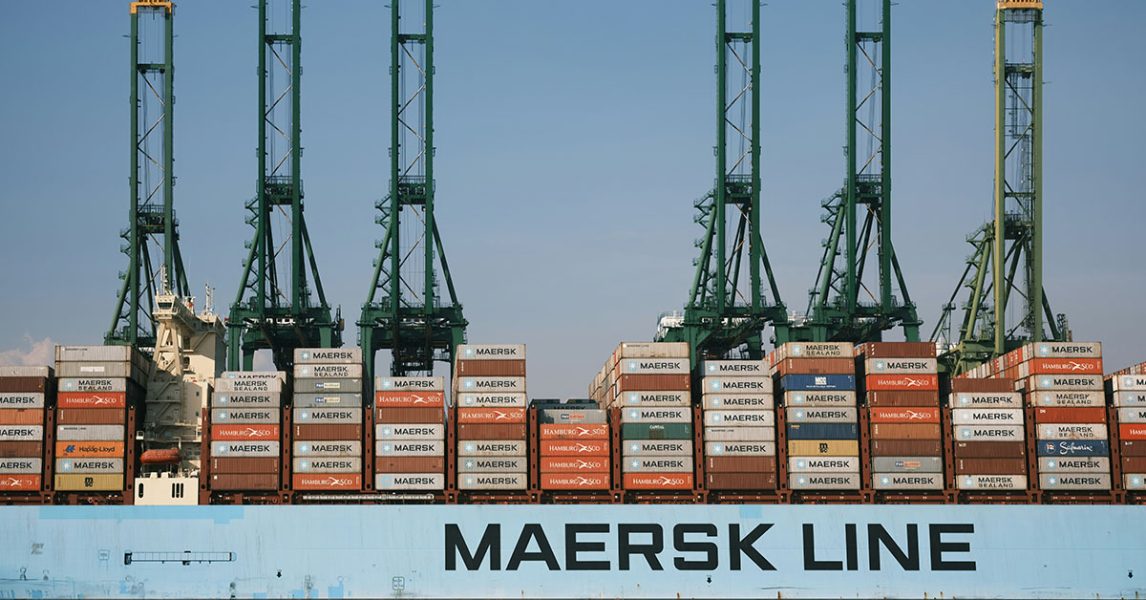
The digital journey for transport and freight
For your fleetDigitisation and digitalisation have changed the way we live, work and socialise. Like so many sectors, the transport and freight industry is capitalising on technology, such as predictive asset management and the Internet of Things (IoT), to improve the way goods and services are moved from the factory floor to the customer by road, rail, air and sea.
Digitisation is the converting of information from analogue to digital form. This enables digitalisation – the processing of digitised information through advanced digital technologies that can lead to greatly improved business processes and even new business models.
In 2022, Swinburne University – funded by iMOVE CRC and the Department of Infrastructure, Transport, Regional Development and Communications and the Arts (DITRDCA) – took a deep dive into the state of digitisation in Australia’s transport and freight sectors. The resulting report, International best practice digitisation in transport and freight. Lessons for Australia, benchmarked our performance against international standards and investigated how, and where, we could improve digitalisation in the industry. It remains the leading study into digitisation and digitalisation in the industry and is yet to be updated or superseded.

In establishing its benchmarking ratings, the authors focused on three main indicators: Productivity, industry and consumer adoption (or acceptance), and policy and regulations. The report concluded that Australia’s transport sector had room for improvement in digitalisation compared to international trends. Out of the 38 OECD countries included in the study, Australia ranked 13th, with (South) Korea, The Netherlands, Japan and the United States filling the top four ranking slots. In assessing the state of digitalisation in Australia’s transport and freight sector, the report’s authors revealed a mixed bag of areas for improvement, and areas where best practice was the norm, or at a minimum, was well on its way to being implemented. In terms of specific sectors, they noted the following:
Roads and traffic management
Australia’s road sector scored the highest among all transport sectors thanks to clear progress in digitalisation practices – for example, the use of adaptive traffic signal control and managed speed limits on motorways, freeways and major arterial routes like Melbourne’s M80 Ring Road.
Public transport
The report suggests that the technology used in Australia’s public transport management — like video surveillance and monitoring — needs improvement to be on par with the process of digitalisation in other countries measured in their study.

Freight
Australia’s freight industry stands to benefit from a raft of efficiency and productivity gains to asset and cargo management by adopting improvements in digitalisation.
Rail
Train signalling and predictive asset management (IoT, Data and Analytics and AI) were highlighted as critical areas where digitalisation could be used to contribute to a more efficient, reliable and cost-effective way of managing transport assets, as well as improving safety and network performance.
Aviation and air transport
Despite stricter airport safety and more restrictive travel regulations introduced over the past 20 years improving passenger safety, the report identified a number of areas where digitalisation can have a substantial impact in protecting aviation infrastructure. This includes intelligent risk evaluations to identify system vulnerabilities, using AI for facial recognition, strengthening cyber security protection of smart systems, and using IoT to improve real-time monitoring of security threats.
Maritime and shipping
The maritime sector scored the lowest, suggesting a need for considerable investment in digitalisation to catch up with international best practices in areas including safety and compliance, communications networks, document digitisation and environmental sustainability. Data-driven decision-making had a huge scope to improve operations and refine shipping routes to improve fuel efficiency in the sector.
Active transport
Improving the safety of cyclists and e-scooters is an area where digitalisation can play a vital role. Analysing traffic volumes and mapping safer, more convenient routes for users is just one-way safety could be boosted.

The report makes several recommendations they believe will help Australia improve transport digitalisation practices in line with the rest of the world:
- Develop a national vision for smart mobility.
- Invest in backbone digitalisation infrastructure.
- Build capacity through education and training.
- Support translational research to bridge the gap between theory and practice.
- Accelerate the deployment of promising new technologies.
A digitalisation case study: Maersk
The experience of A.P Moller-Maersk is an interesting case study on the benefits of digitalisation in transport and freight.
The history of this Danish shipping and logistics — known as Maersk — can be traced back to 1904 when Arnold Peter Møller and his father Peter Mærsk Møller established the Steamship Company Svendborg. Today, the company is worth more than US$26 billion and has a logistics and freight presence in over 160 countries.

In 2015, the company embarked on an ambitious digitalisation transformation after a strategic review reorganised the company into two separate divisions: Transport and Logistics, and Energy. The restructure carried a number of aims:
- To update its cumbersome legacy infrastructure that had reached the end of its
operating life. - To better position itself to compete against new players in the space, like Amazon.
- To improve the customer experience by using digital technology to create an end-to-end logistics solution that would give their customers better management of their global supply chains.
The transformation to digital also supported Maersk’s goal of smarter utilisation of its assets by automating operations to increase efficiency and safety. As well as modernising and streamlining processes and asset management, the digitalisation transformation aligned the way they did business with their environmental and sustainability goals.
The first part of the transformation was the shift to a cloud-based technology platform and, in partnership with IBM, the implementation of two new digital platforms: TradeLens and Twill. TradeLens enables the organisation to digitally connect, share information and collaborate across its entire supply chain, while Twill is an SME-focused platform that aims to create a seamless experience and remove the hassles of international trade by allowing customers to book, manage and monitor their shipments online.

Embracing the cloud has allowed Maersk to introduce IoT platforms for driving big data decision-making and machine-learning solutions across the organisation – such as the installation of sensors on containers and boats for improving quality control during transportation, and developing software that plots more efficient navigational routes, which has led to substantial fuel savings and faster delivery.
In a 2023 analysis by business-to-business payments solutions provider BlueX Trade, Maersk’s digital transformation was deemed a significant contributor to increasing their profitability and shareholder returns:
“Carriers that have successfully navigated digital transformation are seeing market values at multiples two times higher than their [non-digitalised] industry peers. For example, Maersk and Hapag-Lloyd were two of the first carriers to embrace digitalization, and the results have been substantial. Their market cap to EBITDA ratio is almost twice that of [non-digitalised] carriers. This market reality does not bode well for [non-digitalised] carriers who continue down the same path with their current business models.”

The digital transformation clock is ticking
The IMOVE report on digitisation in Australian transport and freight clearly identified the advantages for businesses in the freight and transport industry in embracing digital transformation. While many businesses may have already started on iMOVE’s recommendations, there are many who can still learn from this report’s findings to improve profitability, business growth, safety and customer solutions.
With Maersk acting as a powerful example, investigating how your organisation – and the industry it’s competing in – can take advantage of the benefits of technology is quickly becoming something that can’t be delayed much longer.
Talk to SG Fleet about digital best practices for your transport, freight and fleet mobility.
 Driving Insights
Driving Insights




